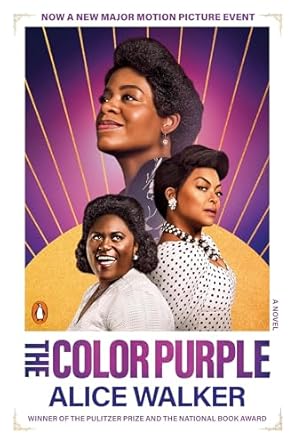The Color Purple by Alice Walker
The Color Purple by Alice Walker has been one of the most frequently challenged and banned books since its publication in 1982. Many schools and libraries in the United States have removed it from their shelves, mainly because of its explicit content, including depictions of sexual abuse, violence, and strong language.
Critics have also objected to its portrayal of race relations, same-sex relationships, and challenges to traditional gender roles. Parents and school boards have often argued that the book is too graphic or inappropriate for young readers. Despite these efforts to silence it, the novel has continued to be read, taught, and celebrated for its honesty, emotional depth, and literary power.
Alice Walker, the author of The Color Purple, is a renowned American poet, writer and activist. Born in Georgia in 1944, Walker grew up in the segregated South and witnessed firsthand the pain and injustice of racism and poverty. Her writing reflects her deep commitment to social justice, especially for Black women.
With The Color Purple, she gave voice to those who had long been unheard. The novel won the Pulitzer Prize for Fiction and the National Book Award, making Walker the first African American woman to receive the Pulitzer. Her fearless storytelling and focus on the lives of African American women helped open new doors in American literature.
The story centers around Celie, a poor Black woman in the American South who writes letters to God as a way to cope with her traumatic experiences. Through her letters, readers witness Celie’s journey from oppression and abuse to self-discovery and independence.
Along the way, she forms powerful bonds with other women who help her find her voice and reclaim her identity. The novel explores deep themes such as sisterhood, resilience, faith, sexuality, and personal growth. It portrays the struggles of Black women with unflinching honesty while also offering a message of hope, healing, and transformation.
The Color Purple still matters today because it continues to inspire and empower readers around the world. Its exploration of race, gender, and power remains deeply relevant, and its emotional impact is just as strong as when it was first published.
The novel reminds us that even the most silenced voices can rise and be heard. What was once banned for being too honest is now praised for its bravery and truth. It stands as a powerful example of how literature can confront pain, celebrate survival, and help change the way we see the world.



